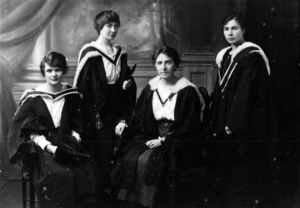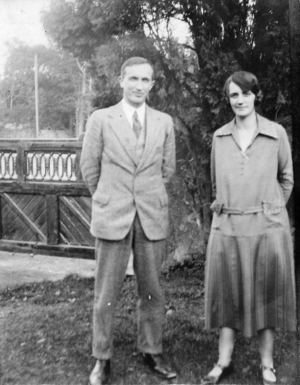Margaret Barrington facts for kids
Quick facts for kids
Margaret Barrington
|
|
|---|---|

Barrington in the early 1920s
|
|
| Born | 10 May 1896 Malin, County Donegal
|
| Died | 8 March 1982 (aged 85) Kinsale, County Cork
|
| Nationality | Irish |
| Spouse(s) | Edmund Curtis, Liam O'Flaherty |
Margaret Barrington (born May 10, 1896 – died March 8, 1982) was an important Irish writer and journalist. She wrote many short stories and articles, and even some novels.
Early Life and School Days
Margaret Barrington was born in a place called Malin, County Donegal, Ireland, on May 10, 1896. Her father, Richard Barrington, was a police officer, and her mother was Charlotte Barrington. Margaret was one of their three daughters.
She spent a lot of her childhood living with her grandfather because her mother was often unwell. Later, her family moved to Dungannon, in County Tyrone. Margaret went to school there at the Royal School, Dungannon. After that, she studied at Alexandra College in Dublin. She also spent some time studying in Normandy, France.
Margaret then went to Trinity College Dublin (TCD), which is a famous university. She studied modern literature and graduated in 1918 with top honors. In 1922, she married a historian named Edmund Curtis. After getting married, she worked as a teacher, teaching German and French in schools around Dublin.
Her Journey as a Writer
Margaret Barrington's first published writing was an article in her college newspaper in 1918. It was about how women students were treated at Trinity College Dublin. As she continued to write, she often went to special meetings held by a writer named George William Russell. There, she met other famous writers like W. B. Yeats and James Stephens.
In 1924, another writer, Liam O'Flaherty, met Margaret. He described her as "the little marvel of the literary circle." Margaret and O'Flaherty became very close. Margaret then left her first husband and moved to England to live with O'Flaherty. In August 1924, she wrote a short story called Colour for a journal. This story talked about social rules and differences between people.
When Margaret and O'Flaherty returned to Ireland in December 1924, their old friends were not very welcoming. They also had a tough time with money for a while. After Margaret's first marriage ended, she married O'Flaherty in London in March 1926. Their daughter, Pegeen, was born soon after.
O'Flaherty encouraged Margaret to write during their marriage. However, she wrote very little during the eight years they were together. She later said this was because of the "difficulties" of married life. By the late 1920s, their marriage was having problems. In 1932, they separated, and Margaret moved to London.
The years after her separation were very busy for Margaret. She translated books, wrote her own stories, and helped people. She supported those fighting in the Spanish Civil War and helped refugees who were escaping from Nazi Germany. She was also a supporter of the British Labour Party, a political group. In 1938, she started writing a column for women in a left-wing newspaper called Tribune.
When World War II began, Margaret returned to Ireland. She lived in Leap, County Cork, with friends. From 1941 to 1952, she wrote regularly for a magazine called The Bell. She contributed letters, reviews, essays, and short stories. She lived in Castletownsend from 1947 to 1953, and then settled in Kinsale.
Later Years and Her Works
In her later years, Margaret Barrington lived a quiet life. She passed away in a nursing home in Kinsale on March 8, 1982. She is buried in a local cemetery.
After she died, a collection of her short stories was published in 1982. It was called David's daughter Tamar. She also wrote at least three novels that have never been published. One of her short stories, Village Without Men, was included in a book called The Glass Shore: Short Stories by Women Writers from the North of Ireland. Another story, Men are Never God's Creatures, appeared in The Art of the Glimpse: 100 Irish Short Stories.



